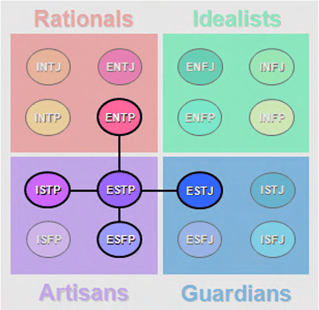Comparison Method
Sometimes it’s easier to understand what something is by comparing it to something that it is not. The next four chapters compare people who share three of their four traits (E/I, N/S, T/F, J/P), to better examine the difference in the fourth trait.
Thinking (T) and Feeling (F) can be expressed by a preference for facts and logic or for feelings and sentiment. Tom Cruise (ESTP) often portrayed a man who was out of touch with his feelings. Jerry Maguire was great at friendship, but really bad at intimacy. Ethan Hunt excelled at figuring out how to accomplish missions considered impossible. And it was money, not sentiment, that motivated Charlie Babbitt to take his autistic brother from the facility he called home. Elvis Presley (ESFP) movies were about getting the girl, making music, and having fun.
The obvious difference between Benjamin Franklin (ESTJ) and Tom Cruise (ESTP) is in the risks they were willing to take. While Franklin repeatedly advised caution and moderation, Cruise sought to satisfy his hunger for danger and excitement.
Figure 4: ESTP Comparisons


For example, we can better understand a difference between Extroversion (E) and Introversion (I) by comparing Tom Cruise (ESTP) to Bruce Lee (ISTP). Tom used a lot of space when he was in motion, racing cars and motorcycles, piloting helicopters and fighter jets, and falling four stories from the outside of the world’s tallest building. Bruce Lee was all about minimal movements.
Sensing (S) and Intuition (N) are demonstrated by comparing Tom Cruise (ESTP) to Muhammad Ali (ENTP). Tom used standard, expected techniques to race cars, pilot fighter jets, and jump from incredible heights. Muhammad Ali used unusual methods to rattle his opponents and fight in the ring. He kept his hands low and his head back, invented the “Ali Shuffle,” and won the Rumble in the Jungle fight against George Foreman with his rope-a-dope strategy.